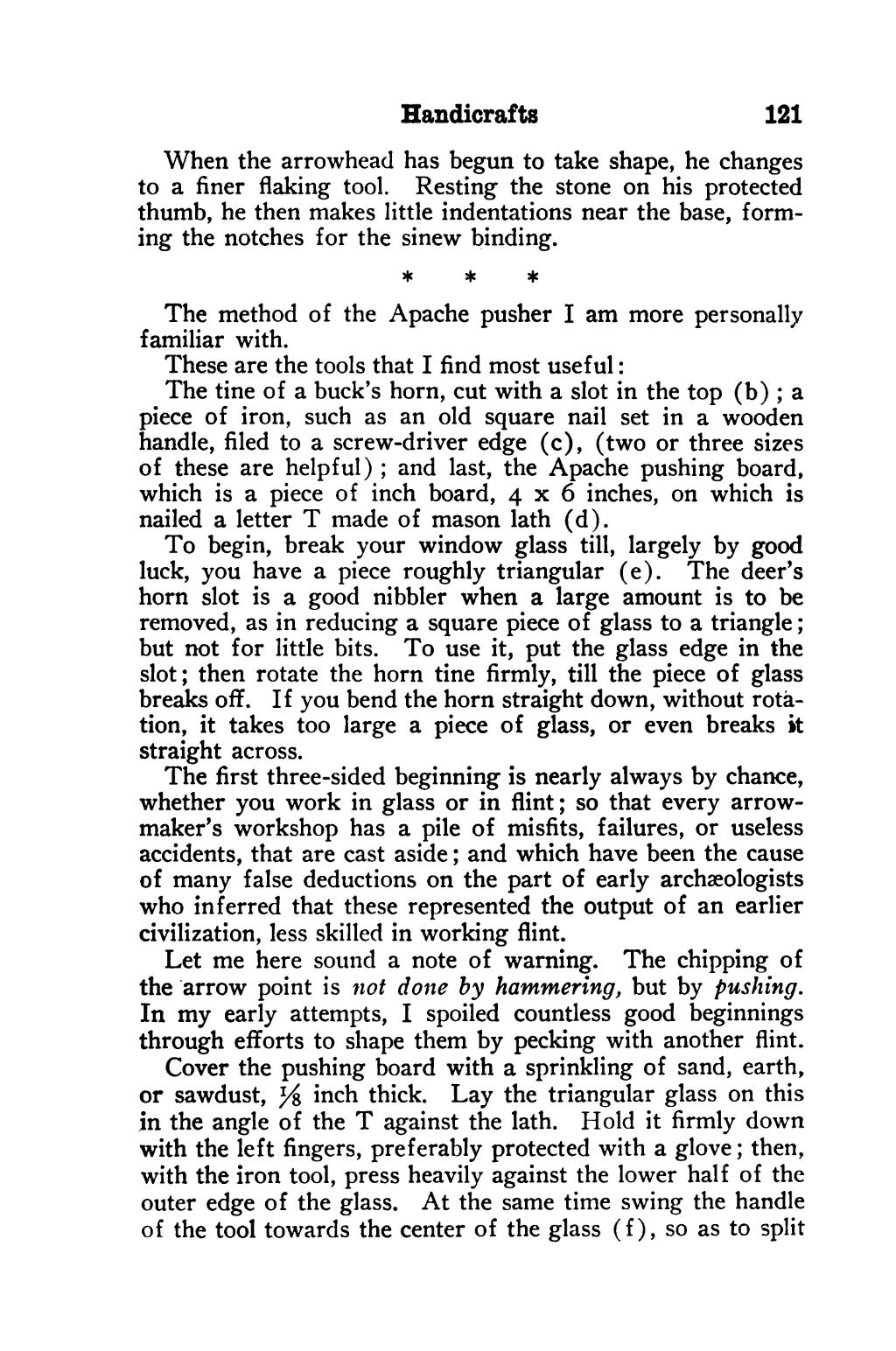Handicrafts 121 When the arrowhead has begun to take shape, he changes to a finer flaking tool. Resting the stone on his protected thumb, he then makes little indentations near the base, form- ing the notches for the sinew binding.
- *K *
The method of the Apache pusher I am more personally familiar with. These are the tools that I find most useful: The tine of a buck’s horn, cut with a slot in the top (b);a piece of iron, such as an old square nail set in a wooden handle, filed to a screw-driver edge (c), (two or three sizes of these are helpful) ; and last, the Apache pushing board, which is a piece of inch board, 4 x 6 inches, on which 1s nailed a letter T made of mason lath (d). To begin, break your window glass till, largely by good luck, you have a piece roughly triangular (e). The deer’s horn slot is a good nibbler when a large amount is to be removed, as in reducing a square piece of glass to a triangle; but not for little bits. To use it, put the glass edge in the slot; then rotate the horn tine firmly, till the piece of glass breaks off. If you bend the horn straight down, without rota- tion, it takes too large a piece of glass, or even breaks it straight across. The first three-sided beginning is nearly always by chance, whether you work in glass or in flint; so that every arrow- maker’s workshop has a pile of misfits, failures, or useless accidents, that are cast aside; and which have been the cause of many false deductions on the part of early archzologists who inferred that these represented the output of an earlier civilization, less skilled in working flint. Let me here sound a note of warning. The chipping of the ‘arrow point is not done by hammering, but by pushing. In my early attempts, I spoiled countless good beginnings through efforts to shape them by pecking with another flint. Cover the pushing board with a sprinkling of sand, earth, or sawdust, % inch thick. Lay the triangular glass on this in the angle of the T against the lath. Hold it firmly down with the left fingers, preferably protected with a glove; then, with the iron tool, press heavily against the lower half of the outer edge of the glass. At the same time swing the handle of the tool towards the center of the glass (f), so as to split
